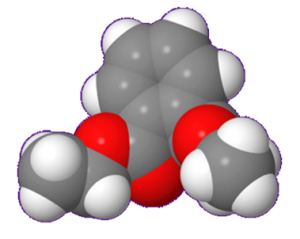My team just published a paper assessing the links between prenatal exposures to phthalates and childhood body size at age 5 and 7. Using data from the Columbia Center for Children’s Environment Health we measured nine metabolites of six phthalates (di-(2-ethylhexyl) phthalate (DEHP), di-n-octyl-, di-iso-butyl-, di-n-butyl-, butylbenzyl-, and diethyl phthalates) in urine samples collected from pregnant women during their third trimester. Body size and body composition data were collected from their children at ages 5 and 7.
Because the 9 metabolites represent a fairly complex, inter-correlated mixture of chemicals we applied Principal Component Analyses to identify major patterns of metabolite concentrations in the maternal urine samples. Two prominent patterns of metabolite concentrations were identified: 1) a pattern representing variation in DEHP metabolite concentrations, and, 2) a pattern representing variation in non-DEHP phthalate metabolite concentrations. In boys, higher concentrations of non-DEHP metabolites in maternal urine were associated with lower BMI z-score, lower fat percentage and smaller waist circumference. Among boys, body size outcomes were not associated with higher DEHP metabolite concentrations and among girls body size outcomes were not associated with either pattern of phthalate metabolites in maternal urine.
These findings were actually contrary to our hypotheses, past cross-sectional studies have suggested that phthalate exposures are associated with higher risk for obesity.


